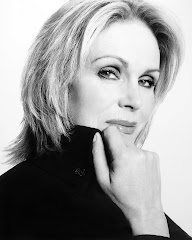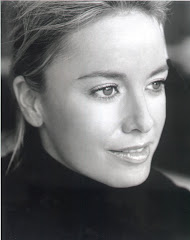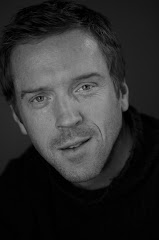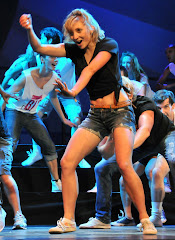Diarmaid O'Meara - behind the dancer
Diarmaid O'Meara @ The Royal Opera House
Photograph : Mo Greig
Malcolm Gladwell, in Outliers (2) explains that achievement is talent plus preparation, and that preparation almost always totals 10,000 hours. It’s not enough to practice for an hour a week for 10,000 weeks if you want to be an expert; the conclusion of the 1993 study - the requirement for ‘deliberate practice’ - is fundamental. An experiment in 1995 (3) concluded that it takes 180 practice trials for the human brain to consistently reproduce new, simple movement patterns. There is nothing simple about ballet choreography and you can see how a much longer training period becomes necessary.
That said, it’s not unheard of to start a vocational career in ballet at a later stage. Royal Ballet Principal dancer Johan Kobborg started his career with the Royal Danish Ballet School at the age of 16. Darcey Bussell had a lot of catching up to do in her first years at the Royal Ballet School and found it hard to pick up the steps. It’s been said that the classical Greek Philosopher Socrates learned to dance when he was 70 because he felt that an essential part of himself had been neglected.
But there’s late and then there’s meeting yourself coming backwards. I’m at the Royal Opera House in Covent Garden to talk to Diarmaid O’Meara, who started training at 22. That’s not a typo. He had never considered doing ballet, there were no family links and he didn’t start vocational training until he’d passed a degree in Genetics, started a PhD and had a job as a research assistant (researching arthritis). His heart wasn’t in it, “I just didn’t love it enough, and I need to really love something to do it”. The reality of being in a lab six days a week was not for him, “it was just something that I could never see myself doing as a career.”
When you meet him it’s easy to see why. He’s chatty, intelligent & attentive - our wobbly table was distracting me until he whipped out a notebook to steady the leg - not someone I can see in a white coat and those dodgy blue shoe-covers. He’s very open and will talk to anyone, but dig deeper and he’s wary at first; my guess is that he makes strong and loyal friendships, but only after taking his time to get to know you first. One of his friends, fellow professional dancer Megan Wood, with whom he is currently working, tells me “Diarmaid always puts a smile on my face. When our feet are hurting and we're exhausted, he will always make me chuckle! He is a very genuine and sincere person and his hugs are always the warmth of friendship. I definitely consider Diarmaid a true friend.”
Moving to Dublin proved to be the catalyst, and in typically understated fashion, just as in all success stories – think Carlos Acosta in the backstreets of Havana – cut to 10 years later and he’s centre stage at Covent Garden - "a friend of mine was doing a few dance classes and invited me to go along with her. I did some contemporary, some hip-hop and then I wandered into a ballet class one day.” The way he tells it, it’s almost impossible to imagine how transformative that class turned out to be. “It all happened pretty quickly from then. I started taking regular classes in Dublin, and one teacher I had, Stephen Brennan, said ‘if you want to make anything happen, you need to move to London’.” Diarmaid was taking five classes a week by this stage, but only for a few months – nothing like the ten years or more of his contemporaries.
He applied to Central School of Ballet “and luckily, Bruce Sansom was the director at the time, and he was very long-sighted. He thought that they could do something with me.” Given that Diarmaid had earlier told me “I had this idea in my head that it was too late : that ship had sailed, it was never going to happen”, what made him take the plunge and leave his job ? “I hedged my bets - something I love vs. something that merely paid the bills”.
Diarmaid O'Meara @ The Royal Opera House
Photograph : Mo Greig
The training was “really tough. In first year I discovered that I had really bad posture and I was really uncoordinated, and I just had to scrap everything and begin from scratch. I think because I had spent so many years not doing ballet, I really needed to just concentrate on the basics. At the beginning of the 3 years I didn’t really know what I wanted from it. I knew I wanted to perform but I didn’t really know what direction I wanted to go in, because I didn’t know if I was any good, or if I was any good, what area was I good at. But over the 3 years I realised that classical ballet was what I really absolutely loved.” In between training Diarmaid worked (and still does) at Sadlers Wells Theatre in Islington.
“The teacher I had in second year, Paul Lewis, was just phenomenal. I don’t think I would have got a ballet job if it wasn’t for him, because he really just pulled it out of me. He was really, really hard on us, on all of us, and he was really hard on me. But it totally paid off because he knew what he wanted to get out of us, and it was all for us, you know, he wasn’t hard on us just for the sake of being hard on us. He was hard on us because he wanted us to do really well. And I’ve huge respect for him because of that.”
Paul Lewis confirms the hard work but points to Diarmaid’s incredible work ethic and level-headed attitude towards his training, “Diarmaid came to us with having very, very little previous experience and we thought it was a bit of a long shot really, but he was very determined and so we gave him a chance at the school. I enjoyed having him around enormously, watching him overcome the challenges that the course presented. He took it all in his stride. He surpassed all our expectations really, he was incredibly focused. He was coming to this very late so he knew he had to knuckle down and really try and catch up, which he did, and he worked incredibly hard for his three years here. But he’s managed to change himself physically as well, because he’s a strong man anyway, but he looked more like a rugby player than a ballet dancer when he arrived, and he’s managed to completely change his physique.” I ask whether he had to adapt his teaching to accommodate Diarmaid’s late start but he says emphatically not, “the information was the same. It just meant that in terms of trying to change your body already when you are a fully formed man - it’s one thing when they’re younger and physically they’re still growing, they’re changing - Diarmaid was pretty much set. But he still managed, through stretching and just working his body using different muscles, really working very hard at it, he did manage to completely reshape himself. He had co-ordination issues and things which, a lot of it he managed to overcome. He’s still working on it, and I think for any dancer that’s always an on-going thing, you’re always striving to improve and he’s still going to do that but his work ethic was phenomenal."
Approaching Christmas in his first term of third year, recovering from an injury proved, as it does with many dancers, to be a pivotal time. Again, the understated way that he talks about breaking his foot in class, “I landed awkwardly on a patch of slippy floor, and my foot just cracked, and that knocked me out for 8 weeks”, belies how testing an injury can be, particularly in the important graduation year when dancers audition for professional work. “But when I got back from that, I came back way stronger than I’d been before. I literally started again with the basics, while my foot was healing.” A Cuban lady at the school looked after injured students and “she was all about finding connections in your body, all movements were very organic, using your breath. She did lots of visualisations. So I went into class every day with my foot up in a chair and I used to visualise myself doing each exercise. And I imagined how it would feel, what my posture was like, what my arms were doing, all the co-ordinations, and what muscles I would feel doing the exercises. So then when I came back I didn’t feel uncoordinated, everything felt right.”
Diarmaid O'Meara & Anna Blackwell in Ascent by Mikaela Polley
Photograph : Bill Cooper.
Diarmaid’s broken foot was still healing at this point, but Polley remembers “he was always present, he was always there. He just wasn’t able to physically join in. I knew that I wanted him to do one of the roles and that there were multiple performances and that he would have that opportunity.” In fact he ended up dancing all of the performances in that role, “and taking it to the next level in the performance side of the piece, and he was fantastic. He’s a very clever man, he knew his work, he was prepared, and I think it gave him an opportunity and challenge to show what he was able of. I think the school were amazed because he came to dance so late, that he had this ability that shone through.”
With graduation fast approaching, Diarmaid auditioned when time allowed. He tells me of one audition in Poland which really tested his mettle. “I couldn’t make the actual audition date (because of his performance schedule on tour with Central) so I said ‘can I come up and take company class ?’ Big mistake. There were about 70 dancers in the studio, and the class lasted less than an hour. It was just so fast, everything was in Polish, I could not pick up a single step, and back then, because I was nervous as well, not being able to pick up the steps, nobody helping me and the director watching me - I just looked like I’d walked in off the street and I’d never done a class in my life. That was just horrific. It was horrible.” It’s impossible to over-emphasise the strength of character Diarmaid demonstrates; graduating students have been through years of constant sifting and evaluation from their teachers, but one of the most challenging adaptations to company life is the reality of working for yourself.
Photograph : Bill Cooper
Polley confirms this, “he’s an excellent partner. I could see very instantaneously that he was a very good partner and he was able to experiment and was very strong and could do some of the more difficult lifts, so I could specifically pinpoint him into a role which was great.”
Diarmaid O'Meara & Maria Engel in the Arabian Dance from Christopher Moore's The Nutcracker
Photograph : Mo Greig
Diarmaid O'Meara as The Prince & Maria Engel as Sugar Plum Fairy in Christopher Moore's The Nutcracker
Photograph : Mo Greig
I ask him what he’d like to dance and with whom, given the choice. “I’d love to do Balanchine, something like The Four Temperaments and Theme and Variations, I absolutely love it.” He also mentions Onegin and “if I was dancing something dramatic, it would have to be Laura Morera, she’s just so intense when she’s on stage. She’s just so passionate.”
I’ve watched several of Diarmaid’s performances and it’s true that he makes it look easy, which it isn’t. The company have been travelling all over the UK, and I wonder where he considers home now that he’s been away from Ireland for years, “where my loved ones are, lucky for me, that means many places.” Performing is what he loves, but he’s smart enough to start planning for the future, which may involve teaching “even now, if I see someone doing something wrong technically, I’ll give them a correction, and I like others to do this to me too”, and, as he already has a B.Sc. (Hons.), re-training as a Physiotherapist is a possibility, “I have already researched where and how much it will cost me”.
Diarmaid O'Meara as The Prince & Maria Engel as Sugar Plum Fairy in Christopher Moore's The Nutcracker
Photograph : Mo Greig
Polley wants to know whether I too encountered the force-field that is the charm of the Irish (I did), and adds, “I found him to be very intelligent. He was obviously slightly older than some of the other students but that maturity shone through in his professional approach to working, not only with me but within the company. He was always eager for feedback, and to improve, and I think that’s what will help him into his professional career, just to keep working hard. He’s got a very lovely nature about him, and I think that will stand him in good stead in the future. He’s got a nice presence on stage and he has some very nice attributes to him. He was a very delightful man to work with. I wish him well for the future.”
Lewis says “he’s doing really, really, really well. He needs to keep working as he is, because there is still room for improvement, he’s going to grow, but I’m very, very, very pleased with what Diarmaid has managed to achieve. I’m thrilled that he’s working now; he’s left the school and gone into employment and I’m sure there are going to be other opportunities for him as well after this. I think he’s going to have a very interesting future.”
Once the tour is over, he’ll be home for Christmas, and then the gruelling process of auditioning begins again (but don’t expect Diarmaid to make a drama out of it – after all, his favourite quote is ‘what’s for you won’t pass you by’), “I don’t know if I’d like to leave London, but if there’s a job outside London, there’s a job outside London.” I can’t imagine that London wants to lose him, so what does the future hold ? “I’ll just keep working and putting myself out there and the rest is for someone else to decide.”
References
1. The Role of Deliberate Practice in the Acquisition of Expert Performance, K. Anders Ericsson, Ralf Th. Krampe, and Clemens Tesch-Römer, 1993
2. Outliers, Malcolm Galdwell, 2008
3. Relative phase alterations during bimanual skill acquisition. Journal of Motor Behavior, Lee,T. D., Swinnen, S. P., & Verschueren, S. (1995).
4. Hot House Kids, produced by Neil George, presented by Deborah Bull, BBC Radio 4
I would like to thank those who have contributed to the making of this interview – Paul Lewis, 2nd year men's teacher, Carol Been & Anya Clifton at Central School of Ballet, Steven Drew & Mikaela Polley at Rambert Dance Company, Christopher Moore at Ballet Theatre UK, Megan Wood, Mo Greig, Neil George at the BBC and Deborah Bull.

.jpg)




.jpg)





.jpg)




.jpg)



.jpg)







































This is a wonderful post, Its really a facinating read to see what's going on behind the scene...
ReplyDeleteWow, Elyse 10,000 hours to prepare. Your interviews are amazing, I can't even imagine how many hours you have spent preparing these. AsI was reading about Diarmaid, I was amazed about all the many details that you could write about him. Just like you, he looks like a person with so much dedication to his art.
ReplyDeleteI stopped by to share a link about dance. My friend Anita has written such a lovely story about dance. She wanted to desperately to be a ballet dancer. But, like Diarmaid she lives the quote ‘what’s for you won’t pass you by’.
‘what’s for you won’t pass you by’
http://wwwcastlescrownscottages.blogspot.com/2009/12/christmas-story.html
Have a lovely weekend.
Karen
Elise,
ReplyDeleteHow marvelous of Karen to mention my blog! You know, I think I have seen you before; my friend Jackie follows you and I think you came once a while back for my post, La Vie est une ballet, on ne la danse qu' une fois....thank you for visiting me! Like Karen said, I so wanted to be a ballerina, but started "late" in life at the age of 13...to old as you know for a career in ballet. But I did dance jazz, tap and musical comedy for many years and what is important is the love inside. There are many other ways to venerate this art and you and I are among millions that continue to love. Your blog is wonderful and VIVE LA DANSE!! Anita
Cloudia - Aloha !
ReplyDeleteTurquoise Diaries - thank you, glad you enjoyed it and found it interesting !
KarenHarveyCox - it's very lovely of you to say so, thank you. I am lucky, I choose my interviewees with care and they don't disappoint ! Actually something Diarmaid said to me has stuck - if you love something it does make it a bit easier. I have popped in to your friend Anita - such a lovely post ! Thank you for recommending it.
Castles Crowns and Cottages - hello, yes, I've been visiting on and off for a while now and I did comment on that post a while back, it was so lovely. As was your latest one. Well, 13 isn't so late once you've read this interview, I think !!! A mountain to climb, for sure, but nothing wrong with a challenge if you are up for it. And look at the rewards....
I agree with you that if you love dancing, it doesn't matter if it's not your career for whatever reason, the important thing is to enjoy it and to spread that enjoyment where you can.
I'm in awe of the depth of your interviews! Marvelous as usual!
ReplyDeleteHello Elise,
ReplyDeleteIt's so nice to meet you! I really appreciate your kind visit to my blog. You are always welcome anytime.
Your blog is just wonderful. I danced ballet for many many years. I loved it so much and actually miss it. I should do it again...:)
Enjoy this joyous season!
~Warmly, ~Melissa :)
This was such an interesting post. It proves that anything is possible if you have the motivation and determination to see it through. Thank you for sharing.
ReplyDeleteOh ... what a wonderful interview ... and I love the pictures. Thank you for sharing ... and introducing me to this wonderful dancer!
ReplyDeleteSmall Footprints
http://reducefootprints.blogspot.com
Oh how wonderful to meet you!!! so glad you popped by my blog....Your interviews are wonderful....It takes me back to when I was in ballet!!!
ReplyDeletevintagelaundress - thank you very much, it's very kind of you to say so !
ReplyDeleteMelissa Miller - hello and thank you for your comment. I hope you find time to take it up again as you miss it so much, especially as you danced for a long time.
Charli and me - yes I agree !
Small Footprints - you're very welcome - thank you !
Diana Evans - thank you,good to hear that you are enjoying the interviews
How fabulously interesting! I love the idea that a person must not just want to dance, but must have to dance. I think that's what sets a dancer apart, isn't it?
ReplyDeleteI envy anyone who has had the opportunity in life to do this, and this young fellow is very fortunate that he is doing something that he loves so much.
Omigosh, I wish him well for the future too.
fabulous interview and gorgeous pictures
ReplyDeleteStay safe and chic darling
English Rose x
http://iamanenglishrose.blogspot.com
Dear Elsie
ReplyDeleteSo good to meet you! Thank you so much for visiting my blog and for your kind words! I love the ballet and so enjoyed your interview and photos! I will be back to visit soon. Penny
OMG!!! Diarmaids,is such a beautiful young man.I can tell by these pictures that his dancing is the beyone.I would give my eye teeth to see him dance.Thank you Elise for bringing him to us.As usual your post are always exciting and informative.
ReplyDeletePlease come by my blog to see my Christmas village.You will so love it. I promise.
Merry christmas ,and May God bless you and yours.
XXOO Marie Antionette
Elise,
ReplyDeleteI went to ballet lessons as a small child but was never any good. I love looking at your blog it awakes the little girl in me, and did you see Darcy on Strictley last night-FAB!
Love
Lyn
xxx
This is amazing! What a wonderful blog :)
ReplyDeleteThank you for the sweet comment, Elise!
ReplyDeleteOh I really really want to watch The Nutcracker, hopefully I'll get to watch it one day:)
xx
an outstanding interview for an outstanding performer, the Merriest of Christmases to all. Sandi
ReplyDeleteHej Elise,
ReplyDeleteJust read my first interview at your blog and I feel like I am the lucky one. What an interesting person he is, such a strong man on all levels. Have been searching the net to see if I could find a piece where he is dancing. Unfortunately no luck there, maybe you know how to find it?
Thanks a lot.
Elizabeth
mother of the two puffles
And so cute, too! :-)
ReplyDeleteGoodness you have been busy, great interview. Thanks for stopping by my blog and your lovely comments.
ReplyDeleteLisa :)
So glad you could join us this week for tea dear lady!~ Yes, I do think that all teapots would look rather jaunty indeed with a "coquetishly tilted", little Christmas hat!..,As always you ballet reviews and features are marvelous!
ReplyDeleteCheers from Silken Purse @ The Plumed Pen
Amazing! xoxo
ReplyDeleteSC
what a delightful young man!!! and such a fabulous interview!!! i truly enjoyed reading this.....and such a great reminder to always follow our heart, no matter what age we are!! :))
ReplyDelete